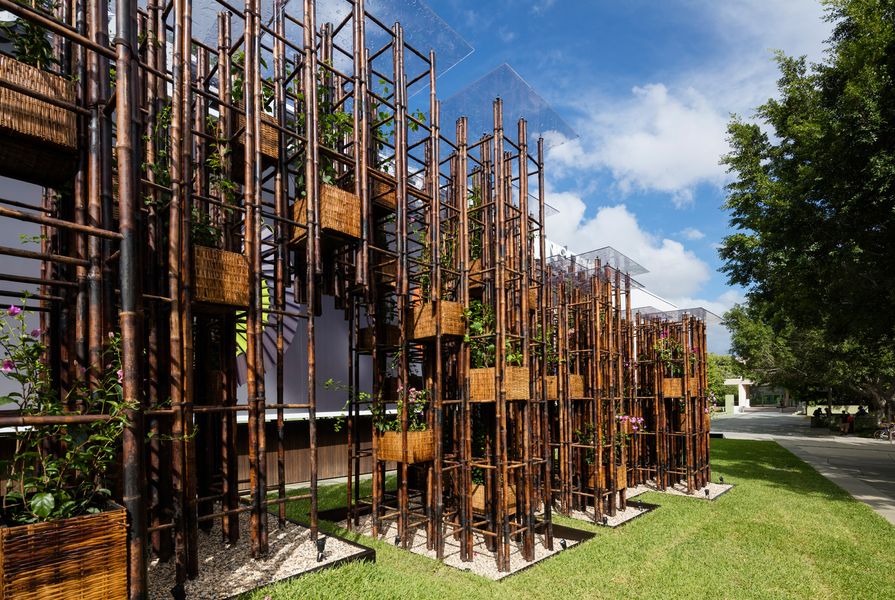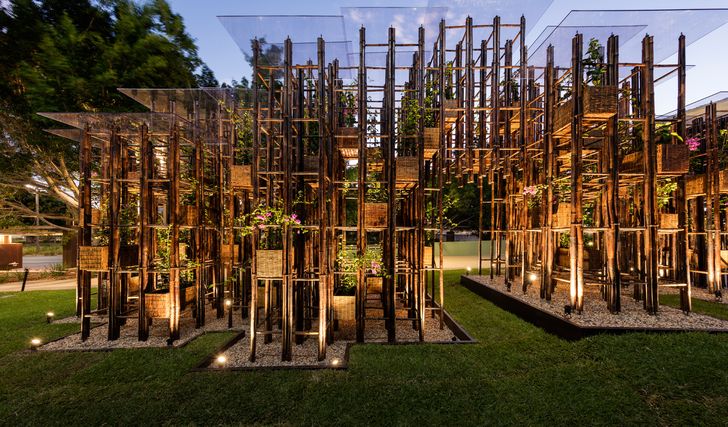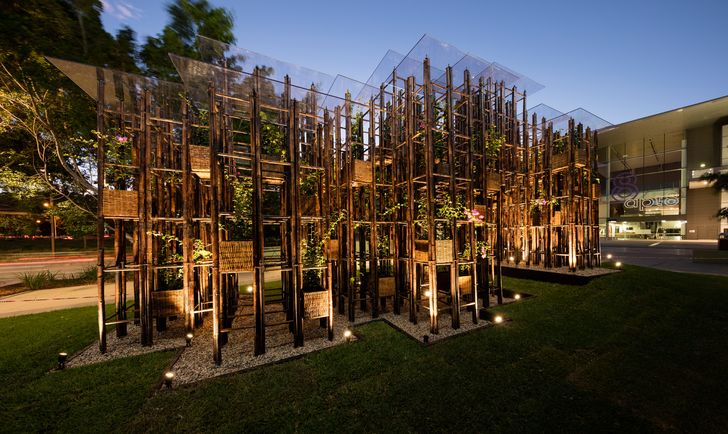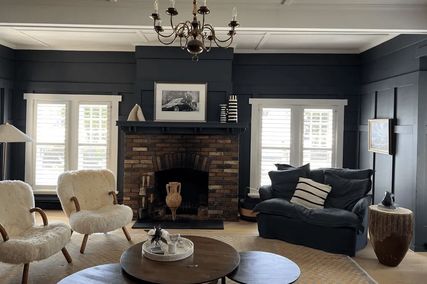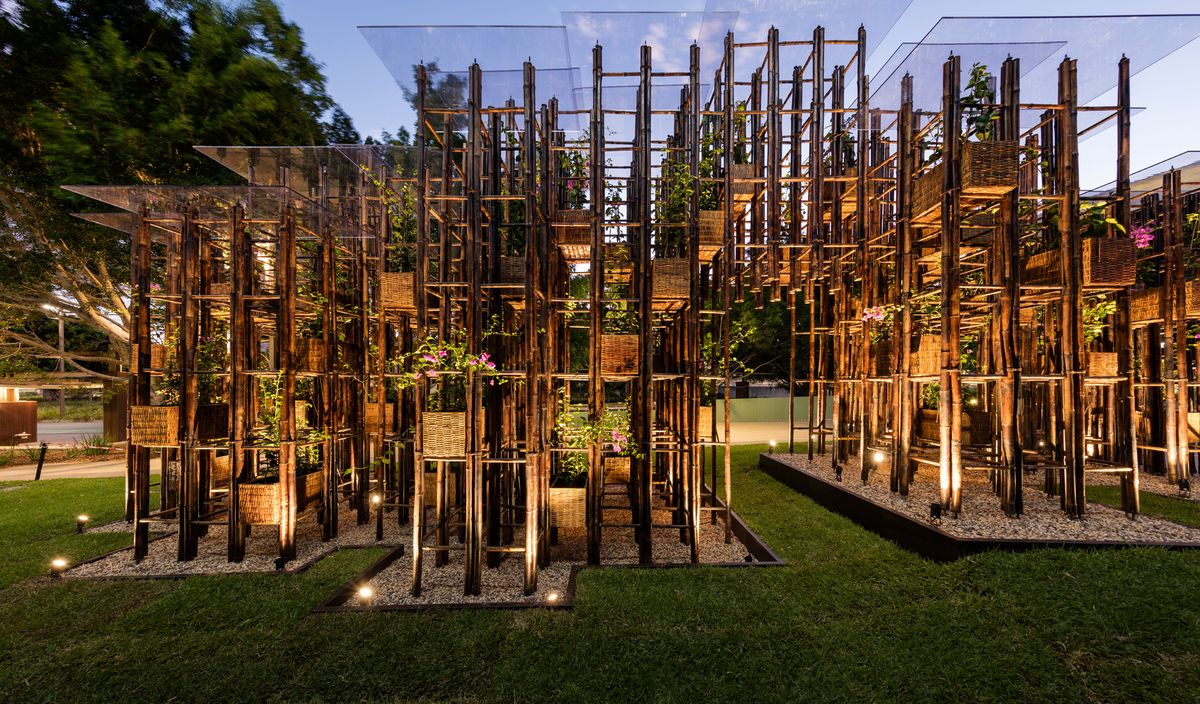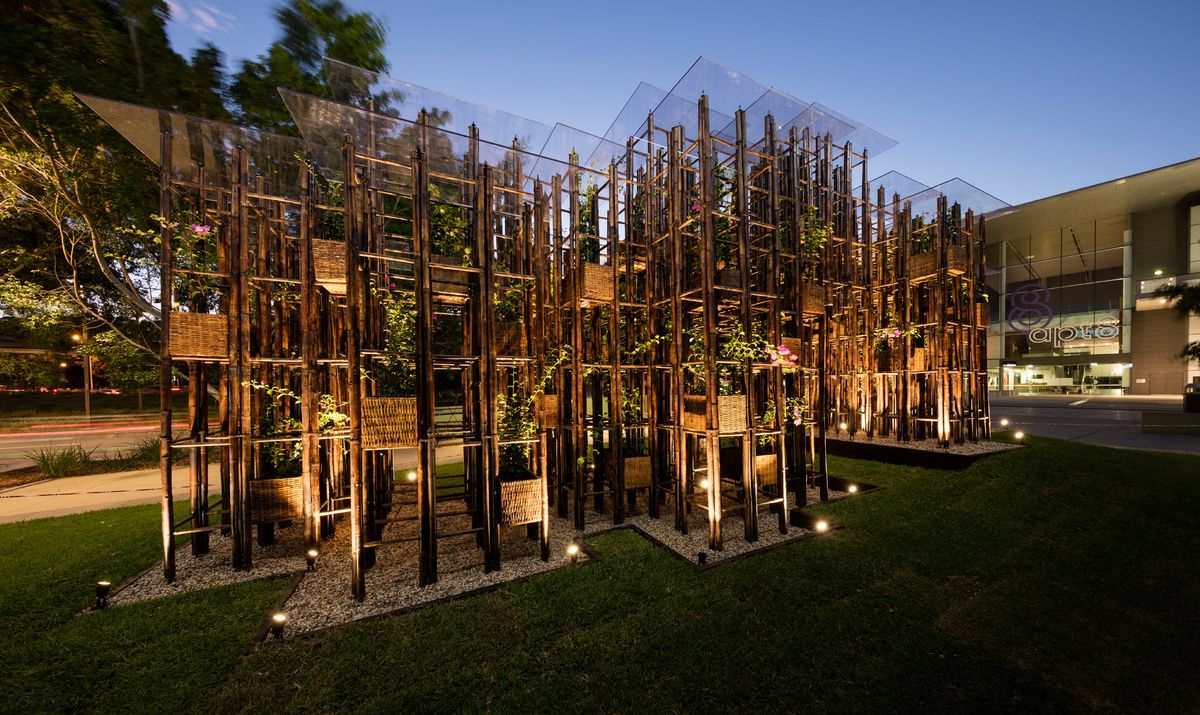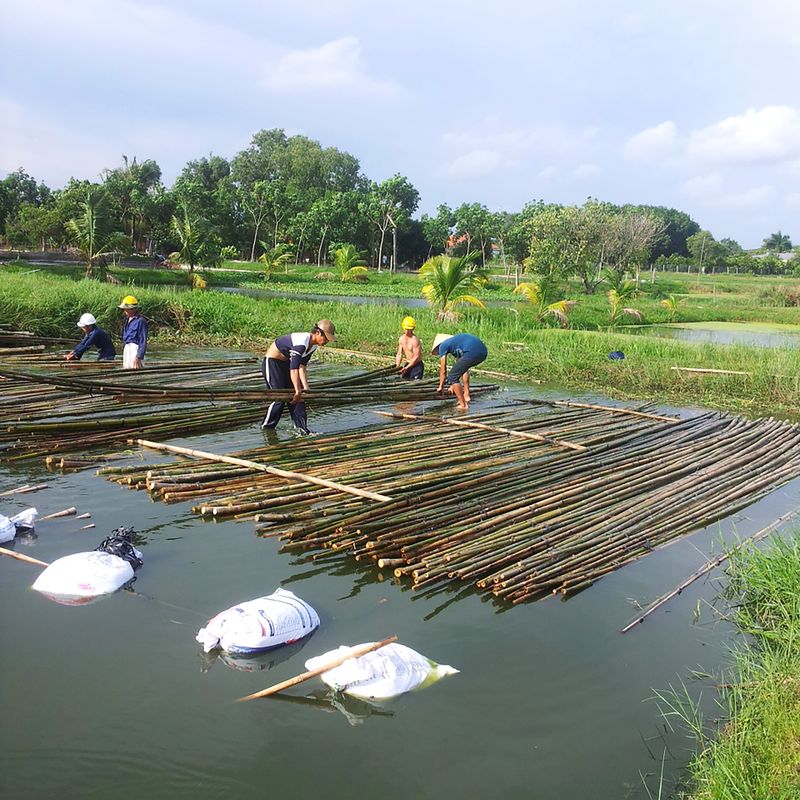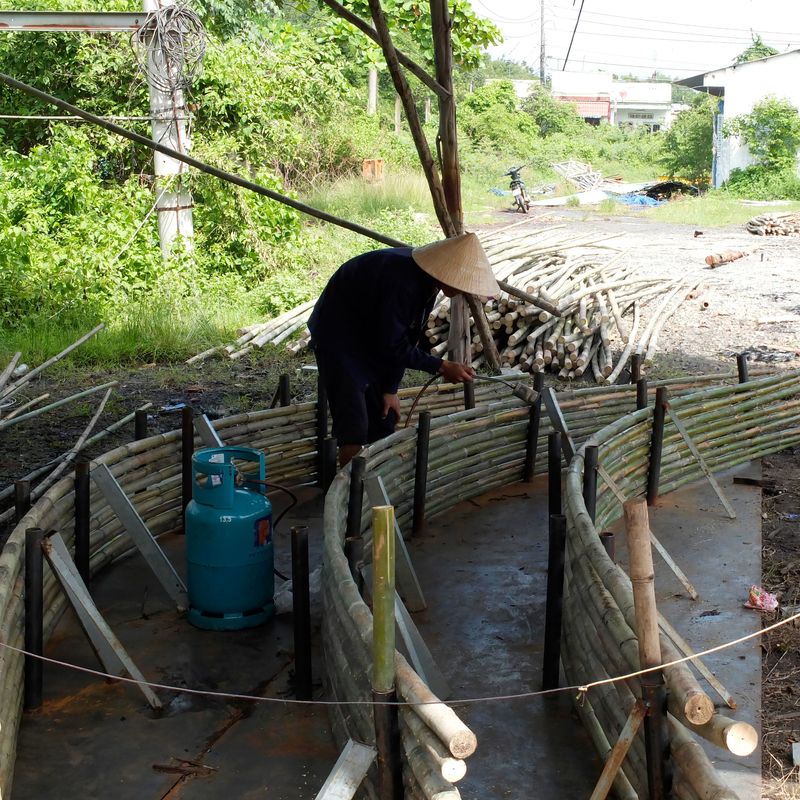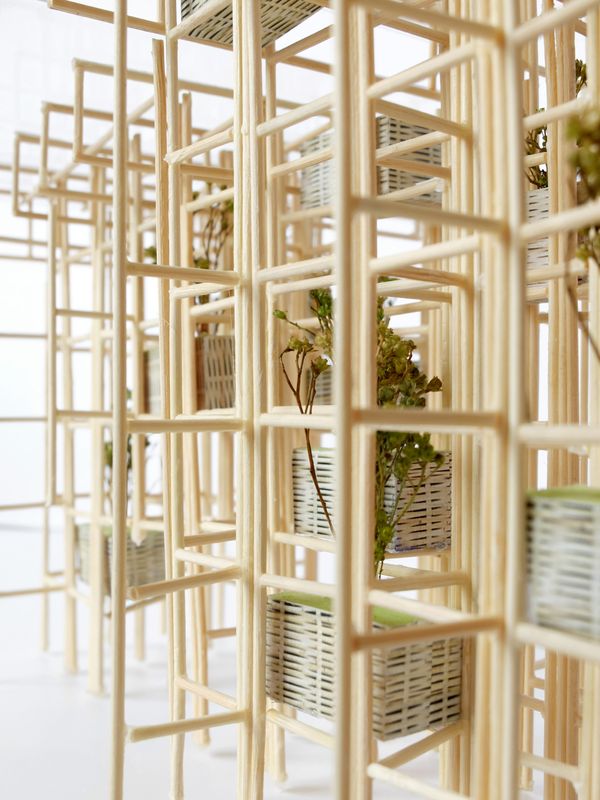Despite Vo Trong Nghia Architects’ recent awards and acclaim, there has been little consideration of the work of the practice beyond the most sentimental and essentialist accounts. The Architectural Record tells this story: “Born in rural Quang Binh in a house without electricity, Vo helped care for his family’s cows as a boy […] his architecture is rooted in the lessons he learned in his childhood. When you live in a hot, humid place without air- conditioning, you understand the need for shade, water, and natural ventilation. You grasp in a very direct and meaningful way the connection between buildings and their environments. You know the versatility of local materials such as bamboo and how to use them. All of this informs Vo’s architecture …1”
Such romanticism is symptomatic of a patronizing attitude among western critics that sees “regional architects” excused from making, as well as receiving, a sharper account of their oeuvre. Instead, their approach to architecture is viewed as growing innocently and instinctively from the land and unbroken cultural traditions. In calling upon “nature” as his muse and material, Vo fuels these expectations. He has claimed that nature is “the true inspiration of creativity” and “the secret to harmony is to silence the subconscious in order to hear what nature has to say.”2 It is obvious to any architectural tourist, however, that there are many architects in Asia and the tropics who have no interest in natural ventilation or bamboo. Vo, himself, is no naïf, but a professionally trained architect with postgraduate studies at the Nagoya Institute of Technology and the University of Tokyo. His work bears the hallmarks of a keen awareness of what other architects are doing. Farming Kindergarten (2013) in Vietnam, for example, sits alongside contemporary projects using looping landscape forms, such as Tezuka Architects’ Fuji Kindergarten (2007) in Japan.
Green Ladder by Vo Trong Nghia Architects.
Image: Dianna Snape
The notion of the innocent other and ideas about nature find expression in architecture in the model of the primitive hut. For the eighteenth-century architect Marc-Antoine Laugier, the first hut made by man is itself a “natural object” – a slight modification of the forest made by a primitive man “with nothing to help or guide him but a natural instinct of what are his needs.”3 The second edition of his Essay on Architecture, published in 1755, included the now well-known illustration of a primitive hut drawn by Charles-Dominique-Joseph Eisen. It shows an arborescent structure comprised of four tree trunks and branches only lightly hewn to form posts and beams. The primitive hut and nature herself are human constructs. We are outside of nature the very moment we conceive it as a category. As soon as we yearn for a “primitive hut,” we have lost the unselfconscious immediacy of the primitive builder. As Joseph Rykwert observes, the primitive hut is an object that has always been lost and cannot, therefore, be remembered. It resides in a place that, Rykwert says, “I must call Paradise” and which is “a promise as well as a memory.”4 What paradise does the hut that recurs in Vo’s work hope to recover?
In interviews Vo recalls a lost paradise, tending oxen and lying “in a comfortable hammock in the forest while the spring was bubbling below.”5 Yet, outside of his seven-year sojourn in Japan, Vo’s entire life has been lived within the ongoing political strife of a once-divided Communist country. The architect was born just a year after the conclusion of the Vietnam war, in Quang Binh, the province most heavily bombed by American B-52s. The postwar years under the ruling Vietnamese Communist Party were turbulent. There were decades of food shortages culminating in a famine in 1988 in which millions were afflicted. For other architects and artists growing up in war-torn nations – Germany and Lebanon, for example – these experiences have coloured their work and its reception. It seems that forgetting, rather than remembering, is required for Vo to appear as an agent for the restitution of a bucolic garden. This is not to say that his childhood memories are false but, rather, to point out the collective desire for an Arcadian place devoid of political angst and historic trauma that is at work. This desire sees Vo’s architecture as an antidote to Vietnam in the present, while paradoxically it is also “the essence of Asian architectural expression.”6
Green Ladder by Vo Trong Nghia Architects.
Image: Dianna Snape
Ho Chi Minh City (HCMC), formerly Saigon, where the headquarters of Vo Trong Nghia Architects is located, is now a city of almost eight million people. It is one of the densest cities in the world, polluted and noisy, yet its residents cram their balconies with pots of plants. Several of Vo Trong Nghia Architects’ projects respond to this tendency and the paucity of formal parks, finding ways to enhance and increase the amount of greenery around, and on, buildings. The front and rear facades of Stacking Green house (2011), for example, are composed of concrete planters that span between the two side walls. House for Trees (2014), a two-bedroom house in one of the most densely populated areas of HCMC, is made up of five concrete boxes designed as “pots” to plant banyan trees on their tops. In these projects, plants and their containers are deployed as an architectural medium. They are not gardens conceived as an extension, frame or foil to architecture. Nor are the trees and plants ornamental. Vegetation is at the heart of the core architectural concept and nowhere more so than in the series of bamboo structures to which the Sherman Contemporary Art Foundation (SCAF) Fugitive Structures pavilion belongs. Vo began working with bamboo soon after establishing his practice in 2006 and has become so engaged with its potential that he has formed his own construction company focused on its preparation and use in building. There is much to commend bamboo: it is lightweight, flexible, durable, cost-effective and environmentally sustainable. But Vo is also interested in its formal qualities and associations. He has massed bamboo stems into refined geometric and sculptural arrangements that go beyond traditional precedents, for example, in the trumpet-shaped structures of the Vietnamese pavilion at the World Expo 2015 in Milan, the wNw Cafe in Vietnam and the Hill Restaurant in Mexico. The most successful of the bamboo structures are the Kontum Indochine Cafe in Vietnam and the Lake Restaurant at the Jardines de Mexico near Cuernavaca, Mexico.
The SCAF Fugitive Structures pavilion departs from these earlier sculptural pavilions. Indeed, it more closely resembles a fragment of bamboo scaffolding than it does a building. Carefully spaced posts of bamboo bundles set up a field condition that never resolves into a room or shelter. The pavilion does not establish enclosure at its side or overhead, with the consequence that the visitor does not inhabit the pavilion so much as pass through it. This ambiguous situation is exaggerated by its transparent polycarbonate roof. It shares with Laugier’s primitive hut the condition of not having walls and not, in fact, giving adequate shelter. Like the primitive hut, it has no surface or envelope, no entry or boundary. Vo’s Fugitive Structure feels like a fragment or a beginning that awaits completion, or, perhaps, the remains of something that was.
Laugier’s primitive hut was not derived from any archaeological investigation. It was a model of a fictional hut, outside of history, yet curiously argued to be the progenitor for all buildings in history. Such a thought experiment is typical of the Enlightenment. Vo’s SCAF pavilion is, perhaps, a contemporary thought experiment of a similarly abstract nature. “Nature” is called forth as the origin of architecture and literal material of architecture, yet is inevitably denatured. This “denaturing” is seen in the spatial organization of the bamboo. The pavilion’s structure is based on that most abstract human order, the extensible three-dimensional grid. It more closely resembles minimalist and conceptual art than it does any forest and, like minimalist art, requires a viewer to bring it alive.
There is nothing rustic or innocent about Vo Trong Nghia’s SCAF pavilion. It is not a material or technical experiment in what one can do with bamboo. It is most definitely not an expression of man’s harmonious relationship with “nature.” The containment of living plants in rectangular planter boxes inserted into this grid speaks of cultivation, miniaturization and aesthetic composition rather than wildness. It is a project concerned with the provisional and the incomplete and with how much can be achieved with how small a gesture. It comes not from a place of naivety, but from a strong engagement with contemporary and historic architecture. Here is the model on which “have been superimposed all architectural elaborations,” writes Laugier of the primitive hut.7 If the gabled hut was the model for Classical enrichment, the space frame and horizontal plane has been the model for late modernism. Presented here in its raw state, Vo asks, “What comes next?” and “What has been lost?”
The 2016 iteration of the Fugitive Structures pavilion series, Vo Trong Nghia Architects: Green Ladder, exhibited 1 March – 15 May 2016 at the State Library of Queensland, Brisbane, and will be exhibiting 8 July – 10 December at Sherman Contemporary Art Foundation (SCAF), Sydney. The exhibitions are presented by SCAF in partnership with BVN. The Brisbane edition is presented as part of the Asia Pacific Architecture Forum, an initiative of Architecture Media and the State Library of Queensland, with financial assistance from the Queensland Government.
This text is an edited excerpt from an essay that appears in the exhibition catalogue published by SCAF. The catalogue includes Sandra Kaji-O’Grady’s full essay and can be purchased from sherman-scaf.org.au.
1. Clifford Pearson, “Vo Trong Nghia Architects,” Architectural Record website, 16 December 2012, architecturalrecord.com/articles/6390-vo-trong-nghia-architects (accessed 27 January 2016).
2. Thao Nguyen, “Architect Vo Trong Nghia: Creativity Stems from Silent Mind,” dtinews website, 27 January 2015, dtinews.vn/en/news/024/38318/architect-vo-trong-nghia—creativity-stems-from-silent-mind (accessed 27 January 2016).
3. Abbe Laugier quoted at liberty by J. N. Durand, “Summary of the Lectures on Architecture” (1809), in Elizabeth Gilmore Holt (ed), From the Classicists to the Impressionists: Art and Architecture in the Nineteenth Century, vol 3 (New Haven: Yale University Press, 1986), 204.
4. Joseph Rykwert, On Adam’s House in Paradise: the Idea of the Primitive Hut in Architectural History , (New York: Museum of Modern Art, 1972).
5. “Architect Vo Trong Nghia: Green architecture is a way of life,” Nhan Dan Online website, 2 December 2013, en.nhandan.org.vn/en/mobile/culture/lifestyle/item/2176002 (accessed 27 January 2016).
6. “Vo Trong Nghia: ‘Living Close to Nature,’” Al Jazeera website, 12 August 2014, aljazeera.com/programmes/rebelarchitecture/2014/08/vo-trong-nghia-living-close-nature-20148511487251222 (accessed 27 January 2016).
7. Abbe Laugier quoted at liberty by J. N. Durand, “Summary of the Lectures on Architecture” (1809), in Elizabeth Gilmore Holt (ed), From the Classicists to the Impressionists: Art and Architecture in the Nineteenth Century, vol 3, (New Haven: Yale University Press, 1986), 205.
Credits
- Project
- Green Ladder
- Architect
-
Vo Trong Nghia Architects
- Site Details
- Project Details
-
Status
Built
Category Landscape / urban
Type Installations
Source
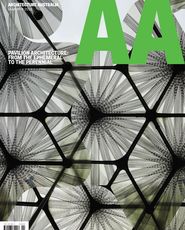
Project
Published online: 30 Jun 2016
Words:
Sandra Kaji-O'Grady
Images:
Courtesy Vo Trong Nghia Architects.,
Dianna Snape
Issue
Architecture Australia, March 2016

